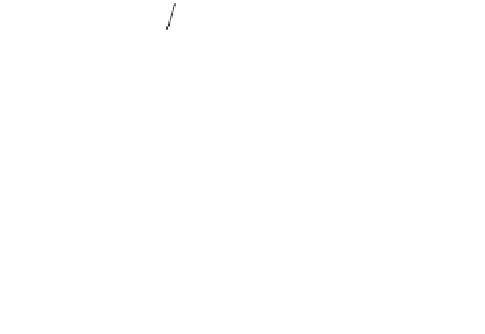Graphics Reference
In-Depth Information
()
=
¢
()
=
(
px
y
,
,
,
i
i
i
px
m
i
i
i
)
=
p
x
y
and
i
i
+
1
i
+
1
¢
(
)
=
(11.19)
px
m
i
i
+
1
i
+
1
.
11.2.2.2
Theorem.
The piecewise Hermite interpolation problem has a unique
solution.
Proof.
This is an easy consequence of equation (11.12). A simple change of variables
in that equation, where we replace x by
xx
-
i
s
=
,
x
-
x
i
+1
i
does not quite do the trick though because the chain rule would tell us that we had
the wrong slopes at the endpoints since
ds
dx
1
=
.
x
-
x
i
+
1
i
We need to modify the input slopes by an appropriate factor. It is easy to check that
the correct formula for the
Hermite basis function
p
i
(x) is
y
y
mx x
mx x
Ê
ˆ
i
Á
Á
Á
˜
˜
˜
()
=
(
)
i
+
1
32
px
sss
1
M
.
i
h
(
)
-
i
i
+
1
i
Ë
¯
(
)
-
i
+
1
i
+
1
i
We can simplify this formula. Let
3
3
2
2
Ê
2
d
-
2
d
1
d
1
d
ˆ
Á
Á
Á
˜
˜
˜
2
2
-
3
d
3
d
-
2
d
-
1
d
()
=
M
h
d
.
(11.20)
0
0
1
0
Ë
¯
1
0
0
0
Then
y
y
m
m
Ê
ˆ
i
Á
Á
Á
˜
˜
˜
(
)
3
2
i
+
1
()
=-
(
)
(
)
(
)
(
)
px
xx
xx
-
xx
-
1
M
D
x
,
(11.21)
i
i
i
i
h
i
i
Ë
¯
i
+
1
where Dx
i
= x
i+1
- x
i
. For a less ad hoc derivation of this result, see Exercise 11.2.2.1.








